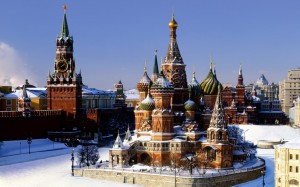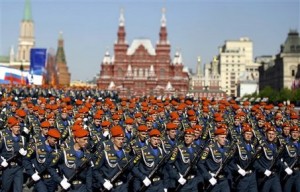 Russia Population 2013
Russia Population 2013
The current population of the Russian Federation is about 143 million, which is a 0.4% increase from the population in 2010. The population hit its peak in about 1992 around 148.7 million people and then decreased until 2009-2010 when it began a slight increase. Based on the total land area of the country and the total population, the population density of the Russian Federation is about 21.5 people per square mile.
Russia Population Projections
The population of the country is predicted to resume its population decrease, however, starting in 2015. By 2015, the population is projected to decrease to about 140.75 million people, which is a decrease of about 1.6% from the current population. Again, by 2020, the population will decrease again to about 139.31 million people, a decrease of about 2.6%. Then, by 2025, the population will reach about 137.48 million people, an approximate decrease of about 3.9%. Between 2025 and 2030, the population will decrease to about 134.82 million people, which is an approximate decrease of 5.7%. Then by 2035, the population will decrease by about 7.8% to 131.86 million. Lastly, in 2040, the population will drop below 130 million, reaching 129.14 million people, which is a decrease of 9.7% from the current Russian population. The main cause for this decrease in population is that the death rate in the Russian Federation is consistently higher than the birth rate.
Russia Demographics
Out of the approximate 143 million people in the Russian Federation, about 81% of these people identify as being of Russian nationality. About 4% of the population identifies as Tatars; about 1.4% identifies as Ukrainian; about 1.1% identifies as Bashkirs; about 1% identifies as Chuvashes; lastly, the other 11.8% is some other obscure or unspecified ethnicity. Roughly 85% of the total population is of some sort of European ethnic group, compared to the old rate of more than 86%.
Religion in Russia
The largest denomination in the Russian Federation is the Russian Orthodox Church, a denomination of Christianity. There are almost 5,000 religious associations with the Russian Orthodox Church. The second largest religion in Russia is Islam, coming in at about 19 million Muslims. There are also approximately 2 million Protestants and 1.3 million Catholics. Both Buddhism and Judaism are also fairly widespread in the country. Over 10% of the Federation’s Jewish population resides in Moscow.
Official Holidays of Russia
While in the United States, the New Year is celebrated from New Year’s Eve to New Year’s Day, in the Russian Federation, there is an official New Year’s Vacation. Starting on New Year’s Eve, the holiday is celebrated similarly to Christmas, sharing gifts, cooking meals, and having a large celebration with family and friends. However, this celebration continues through the New Year and goes until January 5. This holiday became an official Russian Holiday by Peter the Great in 1700. Some people even celebrate it twice, once on January 1 and once on January 14, the date that corresponds to January 1 before 1918 when the Julian calendar was used. The next holiday celebrated is the Orthodox Christmas, which is celebrated from on January 7th and lasts until January 19th. The next celebration is on February 23rd, the Defender of the Motherland Day. This day is a tribute to all of the Russian soldiers that have ever protected the country. March 8th celebrates International Women’s Day, which dates back to 1857 when female textile workers protested poor working conditions. The holiday has been celebrated since 1917 and is a celebration of women in Russia and all over the world.
 The next holiday is on May 1st, which is the Spring and Labor Celebration. This receives its origin from the Chicago worker strikes in 1886, demanding shorter working days. It became a holiday for the first time on May 1st, 1890. Victory Day is the most celebrated and loved holiday of Russia, remembering all of the soldiers that died in World War II. This day, Victory Day, is held on May 9th. Russia Day, June 12th, celebrates when the Declaration of the Sovereignty of the Russian Federation was accepted in 1991. Lastly, November 4th celebrates Civil Unity Day, which is the day celebrating Moscow’s liberation from the Polish armies in 1612.
The next holiday is on May 1st, which is the Spring and Labor Celebration. This receives its origin from the Chicago worker strikes in 1886, demanding shorter working days. It became a holiday for the first time on May 1st, 1890. Victory Day is the most celebrated and loved holiday of Russia, remembering all of the soldiers that died in World War II. This day, Victory Day, is held on May 9th. Russia Day, June 12th, celebrates when the Declaration of the Sovereignty of the Russian Federation was accepted in 1991. Lastly, November 4th celebrates Civil Unity Day, which is the day celebrating Moscow’s liberation from the Polish armies in 1612.
Russia’s Demographic Challenge


